We’ve skimmed nearly twenty recent studies on prospecting emails to build this article. Most of them are well worth a visit, and are referenced in each article.
These studies still have an unfortunate tendency to focus on unimportant micro-details (emojis in the object, for example), but they do have the merit of burying myths and bringing out some salient points about what really works.
The most emblematic statistic in my opinion comes from a study by Woodpecker (a cold mailing tool) that dates back to 2017, but shows something that will always be true. Campaigns with fewer than 200 prospects achieve a response rate more than 2x higher than campaigns with more than 200 prospects.
Not for technical reasons. Not even for management reasons. Simply because these are not the same types of campaign. Below 200 prospects, it’s a matter of hand-sewing, with a relevant value proposition, and a carefully crafted audience/message pairing. Beyond that, it’s (very) often “Spray & Pray” campaigns where you shoot everything you can and squeeze your buttocks.
The ideal, of course, is to manage to shoot more than 200 e-mails while remaining relevant each time.
Sommaire
4 figures to maximize your opening rates
#1 Only 23.9% of prospecting emails are opened
According to a Gartner study, not even a quarter of your prospecting emails are opened. Quickmail‘s survey figures are more precise:

Source : Quickmail
- The average open rate for unsolicited e-mails is 44%.
- 8% of cold email campaigns have an open rate of 80% or more.
- Around ⅓ of campaigns have an open rate of 60% or more.
- 20% of campaigns have an open rate of less than 20% – a sign that they’ve landed in the “spam” folder.
#2 80% of buyers prefer to be contacted by e-mail
Rain looked at prospects’ preferred means of contact. The answer is clear: 80% of them approve of email.
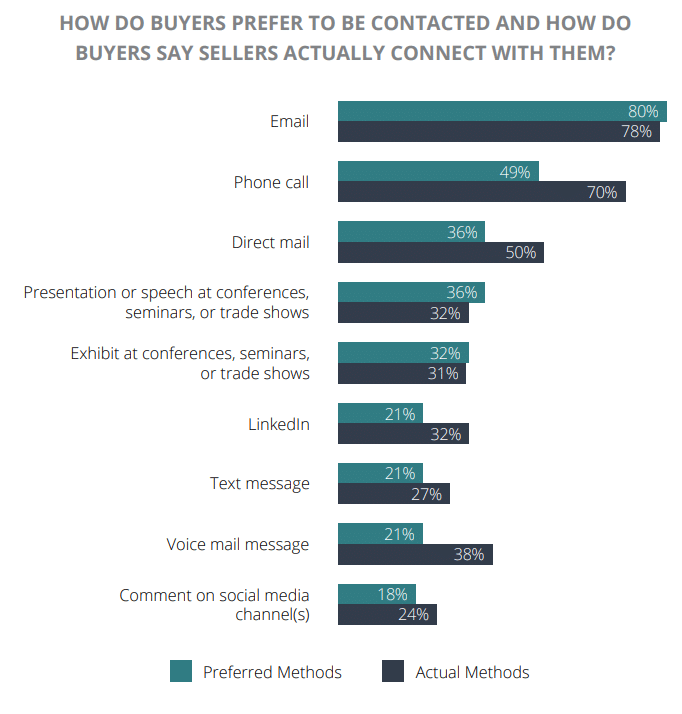
Source RAIN
If we go further, we find that 59% of prospects prefer an email to a LinkedIn inMail (although you can get very good results with LinkedIn prospecting!).
#3 Only 33% of buyers open an email based on the subject line
There’s a plethora of hacks, tips and tricks to increase email open rates with a good subject line.
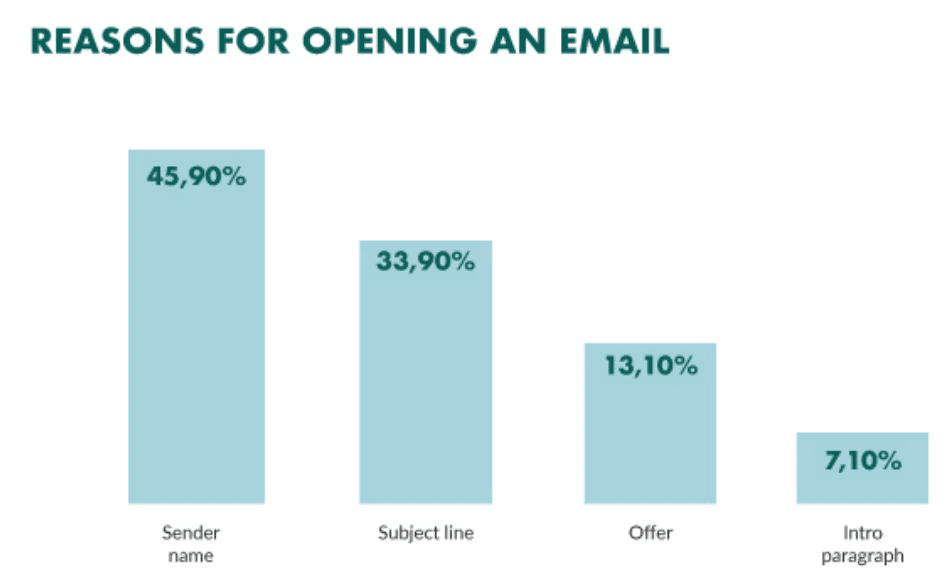
Source: Superoffice
The thing to remember is that, whatever happens, the fact that the prospect recognizes the sender (company name, or your name) is the first factor in opening the door.
33% means that 2 out of 3 prospects don’t read the subject line before opening, and therefore probably never read it.
Salesdorado’s advice
If the prospect doesn’t know you, you can use a shared relationship (provided it’s true & legitimate) as an object to create proximity. It works very well indeed. Ex: “From XYZ”. You’re writing on your behalf, and the prospect doesn’t know you, but if he knows XYZ he’ll probably open.
If this isn’t the case, an object perceived as relevant can compensate for the fact that the receiver has never heard of you, but it’s still not as good.
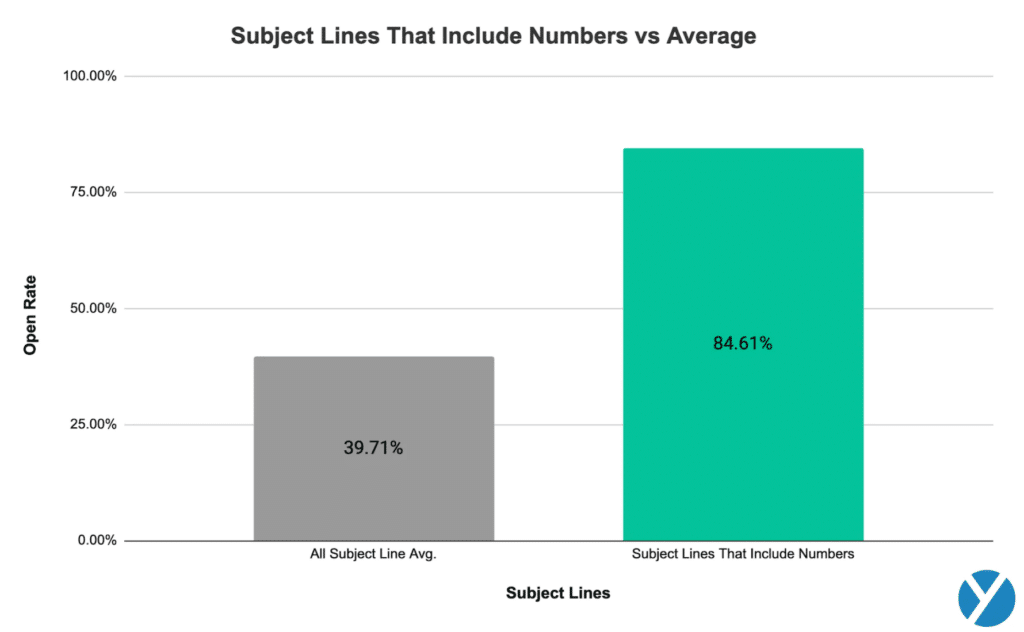
Source:
YesWare
A word of advice: if you include figures in the subject line, provided they have impact and can be justified, you can double the open rate.
Conversely, tricks such as including the prospect’s name, turning the subject in question, etc. only marginally increase the open rate. Not to mention the hacks about putting emojis or keywords in the subject lines of your e-mails.
- Around 10% higher open rate for a subject line that includes a question
- 7% higher open rate for an email subject that includes the word “increase” …
A study by Superoffice compares the open rate of an e-mail with or without the prospect’s name in the subject line – which gives 22.6% VS 22.09%. In other words, no impact.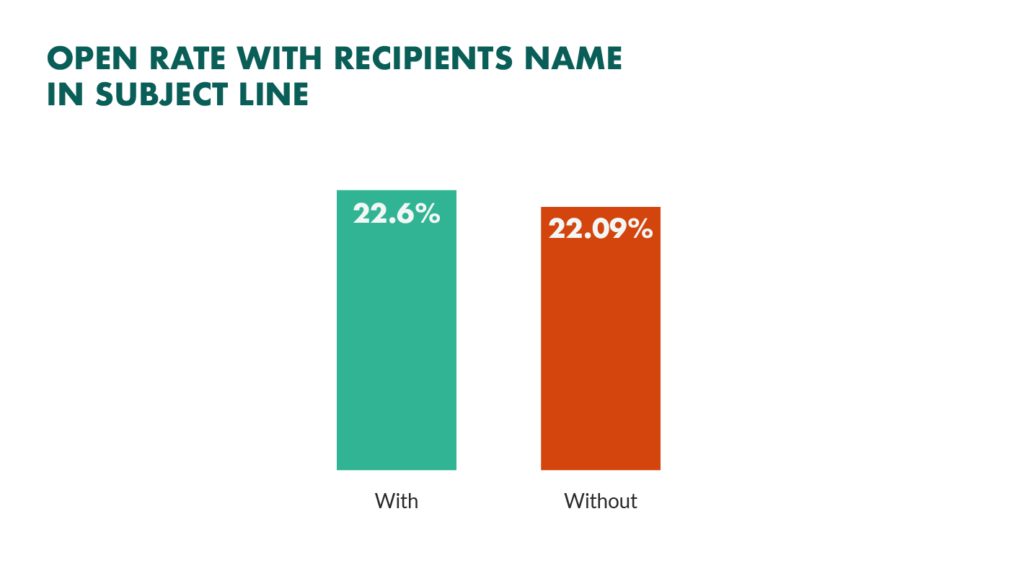
Source: Superoffice
They also say that an object with the name of a film or song gets 26% on average … In short, either you have a good object – for example, you can take inspiration from our 40 prospecting email objects and go for it, or don’t and don’t waste too much time because it doesn’t make a huge difference.
#4 80% of emails are opened on mobile
According to a study by Campaign Monitor, more than three-quarters of your prospecting e-mails are opened on mobile.

Source: Superoffice
Salesdorado’s advice
If we had to remember just one thing, it would be the importance of having the simplest possible experience and a very simple call to action.
For example, if you ask the reader to click a link that requires them to log into an application with a login & password to see what you want them to see, you’ve lost in advance. 80% of the time your email is opened. It stings.
If you want to show something, put it in the e-mail. If you want to reference something, make a simple & discreet link.
5 figures to maximize your response rates
If you want better response rates, there’s no need to beat about the bush: you need to work on your offer – which is why we’ve given you a few tips on how to write the perfect prospecting e-mail.
If what you’re proposing in your e-mails is of no interest to your prospects – for example, a one-hour demo presenting your solution to a problem they don’t have – you can optimize all you want, but no one will respond.
This is the clearest point in Backlinko ‘s analysis of 12 million prospecting emails: emails that talk about link exchanges or guest articles have the highest response rates. They’re probably also the ones with the clearest value proposition.
In this article, Brian Dean also expresses his surprise at the high response rate of emails offering to sponsor content (i.e. to buy). Not us: Buying is often a pretty interesting value proposition.
Without going so far as to buy – especially if you want to sell – it’s the offer and value proposition of your contact that will generate responses. What we’re presenting here are just a few ideas for optimization.
We’ve also come up with 8 very practical tips for getting a response to your prospecting emails.
#5 Only 8.5% of prospecting emails receive a reply
A simple figure from Backlinko: less than 10% of prospecting emails are answered. And they’re not the only ones to say so: Moz achieves a response rate of around 8%.

Source: Backlinko
#6 Relaying triples response rates
Sending personalized prospecting emails to a well-segmented target is an excellent start. However, your potential customers process a huge number of emails every day, and very often miss out on your proposal, even though it could be of interest to them.
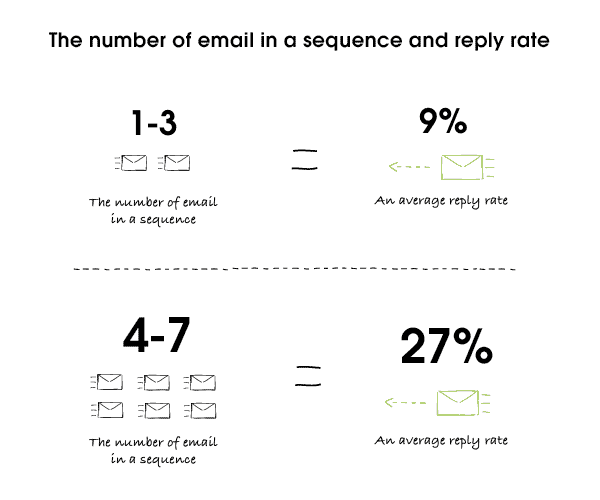
Woodpecker, an email prospecting tool ranked among the best coldmailing toolsThis explains why campaigns with 1 to 3 e-mails in a sequence have a lower response rate (9%), and campaigns with 4 to 7 e-mails in a sequence have a response rate three times higher (27%).
Follow-ups are there to remind your prospects that you’ve already tried to contact them, but they may have been too busy to reply the first time. However, this doesn’t mean you should flood your prospects’ inboxes with as many follow-ups as possible, until they break off and reply to you.
Systematically send at least 3 follow-up emails, spaced several days apart. The best way to ensure this is to use an email automation tool like Woodpecker or Lemlist.
While sending 3 or more messages achieves the best overall response rate, sending just one additional follow-up can increase the response rate by 65.8%.
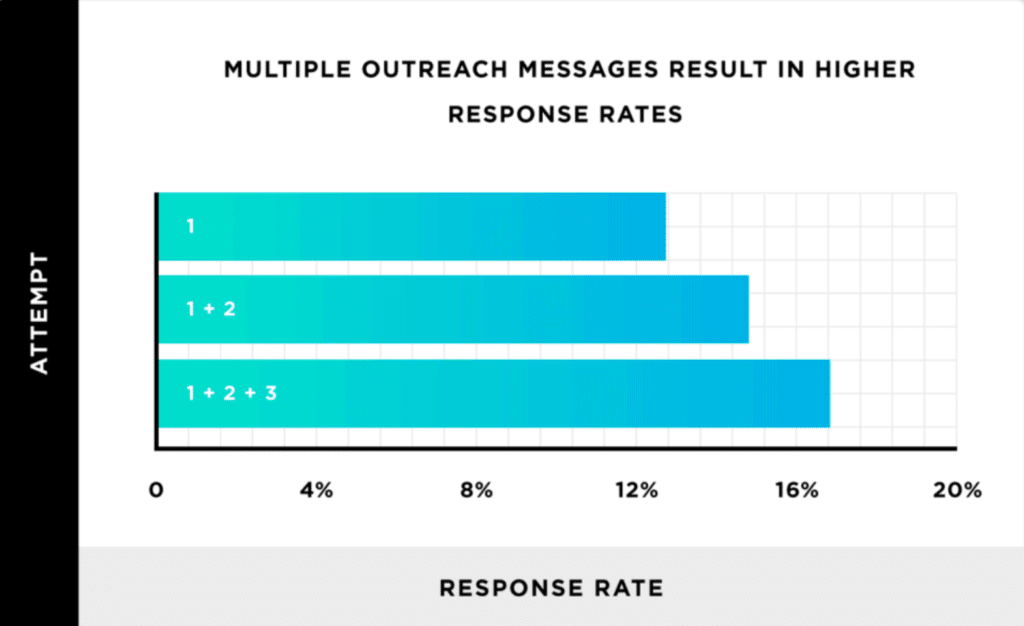
Source : Backlinko
#7 Diversify your points of contact to double your response rates
Compared with a single contact, sending e-mails to several contacts improves response rates by 93%.
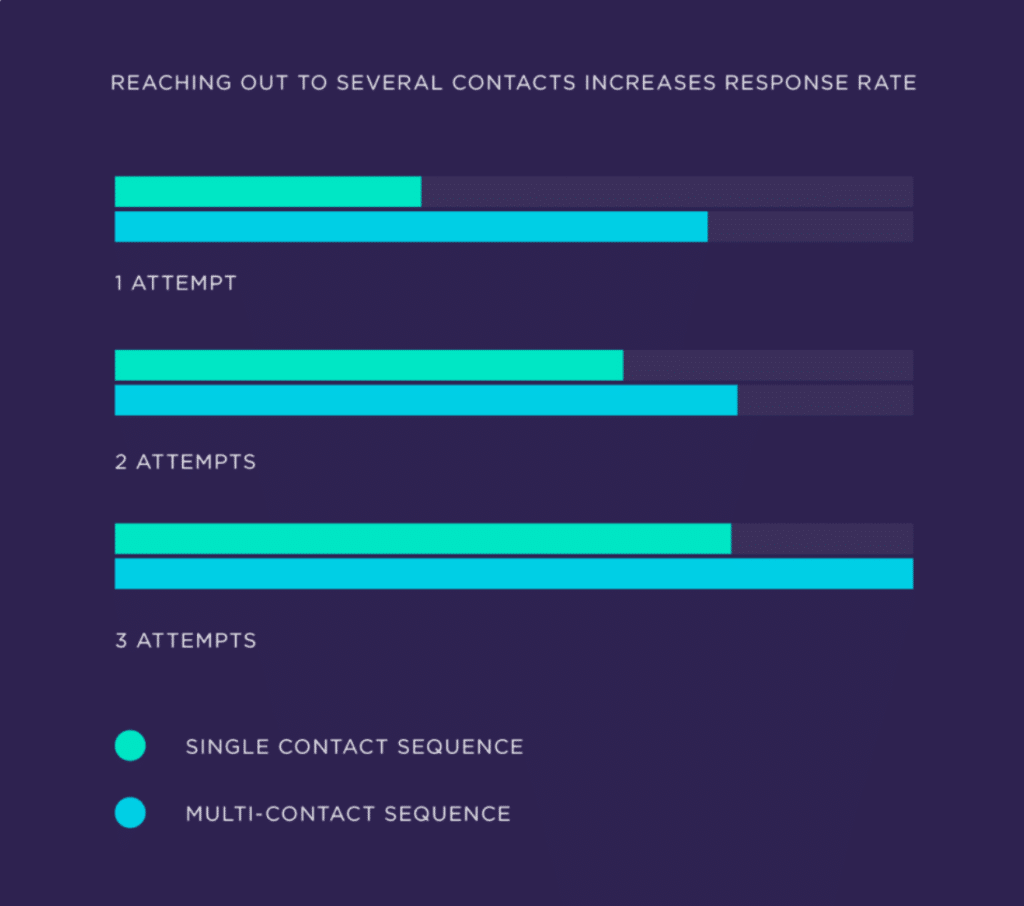
Source: Backlinko
If you’re addressing a blog run by a single author, you probably don’t need to worry about sending messages to several different contacts.
On the other hand, it’s important to send messages to several contacts when addressing large websites with dozens of employees. In fact, it can be difficult to know who is responsible for a given task: by multiplying your contacts, you multiply your chances of finding the person who can respond to your request.
#8 Working on your signature can have a marginal impact on your response rates
Prospecting emails containing links to social profiles have a 9.8% higher response rate than emails that don’t – links to Instagram and LinkedIn seem to be the most effective.
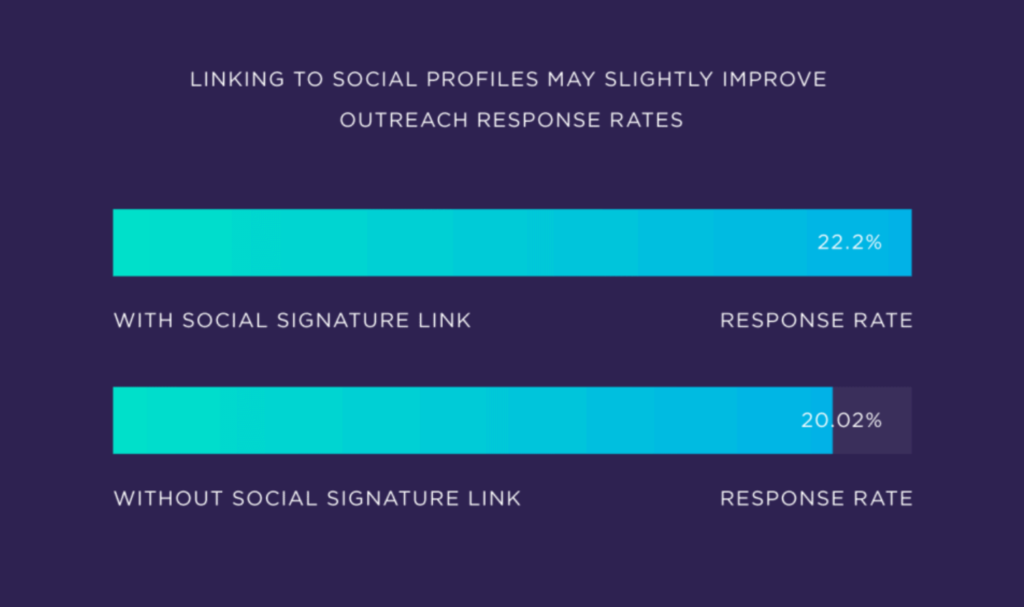
Source: Backlinko
A word of caution: the presence of social media links is generally indicative of a more polished, professional signature, which on the whole inspires greater confidence.

Source: Backlinko
Salesdorado’s advice
In the end, the important point here is quite basic: you have to make the most of every opportunity and take care of every aspect of the email.
#9 The day of the week and the sending time are of little importance
Several industry studies have attempted to answer the question of the “best day to send e-mails”. However, most of these studies focus specifically on email marketing (newsletters, etc.).
They also tend to focus on open rates, not response rates.

Source: Backlinko
The Backlinko study essentially showed 2 things:
- There is very little variance between days of the week (not statistically significant),
- Weekends, unsurprisingly, perform slightly less well than weekdays.
Read our top tips on email prospecting:
- The Bible of B2B prospecting emails
- Everything you need to know about email prospecting






